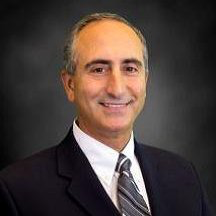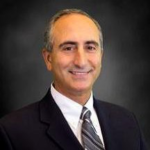
According to a recent analysis of Medicare fee-for-service claims incurred through May 2020, there has been a distinct decline in the number of routine hospitalizations among beneficiaries — but a steep increase in patient acuity as well.
The result of this convergence, noted in reporting by the Centers for Medicare & Medicare Services and the National Investment Center for Seniors Housing & Care, is a reduction of the possible resident pool as well as increased clinical and operational complexity directly tied to a higher acuity mix. These factors add to the growing financial and operational pressures facing senior living communities as they look to rebound from COVID-19.
These pressures are among the factors that caused Lisa Thompson, chief strategy and marketing officer at Pathway Heath, to note “new major realities need to be addressed head-on by senior living operators in order to rebound from COVID-19.” Thompson spoke at the recent 2021 Navigator Leadership Summit.
The Navigator Leadership Summit is an annual opportunity for senior care facility operators and senior executives to enhance their knowledge about things that matter to facilities while networking with the business partners that serve our industry with food and dietary supplies, as well as medical and business products and services.
The realities Thompson noted include a reduction in revenue due to a decrease in occupancy, potential permanent changes in how operators care for their residents, and the everyday challenges of food preparation and infection control.
However, as we explored during the summit, there are innovations, procedures and policies that can be incorporated into senior care facilities’ strategic planning to address these pressures and set the stage for success.
Economic impact of COVID-19
There is no doubt COVID-19 has had an enormous economic impact on senior care facilities. Anne Tumlinson of ATI Advisory described some of the financial pressures affecting the senior care industry and creating the “new normal.”
Volume in the skilled nursing facilities (SNFs) has been slow to rebound due to higher patient clinical operational complexity and overall concerns around COVID-19 safety. While noted hospital admissions are down overall, Tumlinson noted, patient acuity is up. The increase in acuity is putting added burden and stress on the SNFs in terms of care needed.
There has also been an erosion of trust in the senior care space from potential residents and their families. This erosion, coupled with higher patient acuity, means that the volume of people entering SNFs will continue to be a challenge.
Another trend to note is growth in Medicare Advantage program enrollment and the impact this will cause. In the next two to three years, more than half of all Medicare beneficiaries will receive healthcare through a private carrier participating in Medicare Advantage, Tumlinson explained.
This increase in third-party carriers provides an opportunity for the senior care space as it highlights how operators will be asked to be part of the management of their residents’ healthcare costs. It is vital for providers to plan for this enrollment increase now.
Adjusting life within facilities
Industry pressures reach beyond financial factors to include resident satisfaction, specifically related to the dining experience and nutritional needs, as well as challenges related to infection control for residents and staff.
Noted infection prevention and control expert J. Hudson Garrett Jr., PhD, MSN, MPH, FNAP, focused on the very topical conversation of the impacts of infection prevention and control on skilled nursing and assisted living facilities. Regardless of the function or job within a senior care facility, Garrett believes “everyone has some role for which they are responsible for infection prevention and control.”
As infection control and prevention are complex challenges, success requires a completely collaborative practice for all those involved. Operators need to be tuned in to the latest advancement and guidelines from federal and local health experts. It is important to develop proactive partnerships with distribution partners to ensure uninterrupted supply lines for critical supplies and products.
Garrett also emphasized the application of basic practices of cleaning and hygiene adopted over the last year will remain the “new normal” and that facilities must remain vigilant in adhering to those best practices.
The shift to in-room dining during the pandemic has left an impact as well, with some residents experiencing unintended weight loss and staff needing to maintain food temperatures and presentations. Unintended weight loss can be classified when a resident over age 65 experiences a 5%-10% body weight loss throughout a 12-month period. The weight loss can be caused by medical conditions, physical difficulties and anxiety or depression, including any number of factors related to the shuttering of communal dining.
As communal dining returns to the facilities for vaccinated residents and staff, Tina Burns, CFSP, foodservice product consultant for Direct Supply, stressed that “it is key to adjust how we serve, what we serve and when we serve.”
Supplements and whole food options, residents’ favorite snacks and fortified foods can help manage dietary and weight needs while adding a nice change of pace. Theme nights, teaching kitchens with interactive experiences and celebrating novelty holidays (National Grilled Cheese Day, anyone?) are all great ways to involve residents and improve the overall experience to help maintain a positive outlook and have a little fun.
Additionally, finding creative ways to serve meals to the rooms of residents unable to eat communally – for example, serving the meals within the doorway to allow for interaction with neighbors and friends or having a meal by the window could help relieve some of the anxiety and monotony of in-room dining. It is also essential to have the right equipment like insulated delivery carts, mobile preparation carts and disposable high-heat plates to help ensure food is deliverable at the right temperature, hot or cold.
Looking forward
Due to the pandemic, this year’s Navigator Leadership Summit summit was held virtually, but the commitment from senior care operators to learn and network remained unchanged. The theme for this year’s conference was “One Community with One Purpose.” Today, as we began the adjustment to our “new normals” and our rebound from COVID-19, this has a meaning like never before.
Fred Bonaccorso is the executive vice president of Navigator Group Purchasing. Navigator is the largest and most experienced full-service GPO exclusively focused on senior care, offering a full range of programs, tools and services to help members achieve their resident and financial goals. The company is a subsidiary of Managed Health Care Associates.




